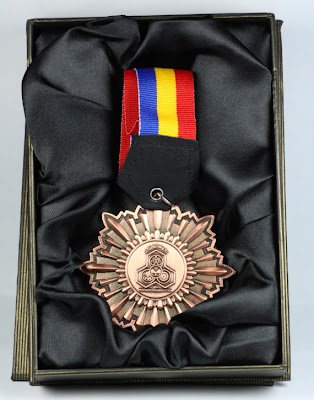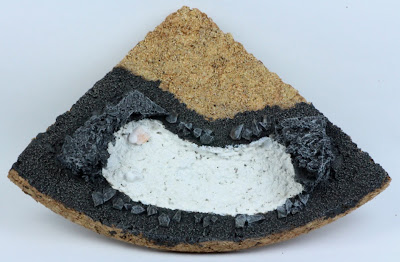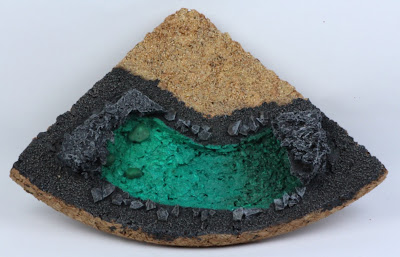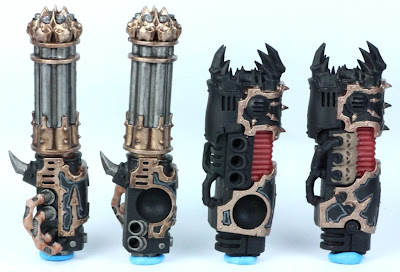 |
| Front profile of Abbadon the Despoiler's face |
 |
| Left profile of Abbadon's face |
 |
| Right profile of Abbadon's face |
For those who might be unfamiliar with the scale I was working with, I took a photo (see below) of the miniature's head together with a 31 mm paper clip and the smallest coin in the Malaysian currency. Surprisingly I did not have to use any form of optical magnification when painting the face, although going forward I may have to, in order to paint more realistic looking eyes with coloured irises and reflections of light. That, however, is a more advanced technique which I have yet to try.
Using the 'Heavy Metal Masterclass Guide to Painting Faces
If you are looking for the original Games Workshop guide to painting faces, a quick search via Google should lead you to the PDF file. In the steps below, I will be showing more of the things I did wrong (and right) when attempting to use the Masterclass guide to paint Abbadon's face.
Step 1: Painting a basecoat of Tallarn flesh on face was fairly straightforward step. In my case, I used the Light Grey Tamiya Fine Surface Primer for the undercoat.
Step 2: Another fairly easy step whereby a very thin wash of Dark Flesh was applied all over the face and the wash was allowed to pool in the recesses. I was still happy with myself at this point.
Step 3: This step called for a second wash comprising a mix of Scorched Brown and Chaos Black. But I fumbled big time in this step as I applied the wash on too thickly. My bad.
Step 4: A first mid-tone layer comprising a 2:1:1 mix of Tallarn Flesh, Fortress Grey and Bleached Bone was applied to all areas except the recessed areas. After I completed this step, I could hardly notice much of the first wash of Dark Flesh. But that was entirely my fault for bungling Step 3.
Step 5: The second mid-tone layer was a 1:1 mix of Tallarn Flesh and Bleached Bone. I thought I did rather ok at this step. At the very least, it built a foundation for Step 6, so a pat on the back for me.
Step 6: A final mid-tone layer of pure Bleached Bone was applied only to raised areas of the face and at this stage, I could make out some depth to the face. More back slapping for me then.
Step 7: This step required a wash, mixed from equal parts Bleached Bone and Regal Blue, to be painted around the eyes. However, I modified the step slightly by using less Regal Blue. Similarly, for the suggested step of using a 1:1 wash of Scab Red and Bleached Bone on the bottom lip, I used less Scab Red to prevent it from looking too red.
Step 8: Finally, a final highlight of Skull White was painted on the most prominent areas of the face. In addition, I painted a thin glaze of Skull White on the lips to further reduce the redness. In this step, I also painted the eyes a very simple black pupil on white sclera. As I mentioned earlier, yet more advance techniques actually suggest painting the iris of the eye as well as light reflections, but I decided to leave that for another miniature and not try it on Abbadon.
Conclusion: I was happy with the final result but there is definitely room for improvement if I am to achieve more realistic skin tones and eyes. That means trying out new methods and practising existing ones. As for Abbadon, the rest of his body awaits painting.
























.jpg)
.jpg)
.jpg)


.jpg)















